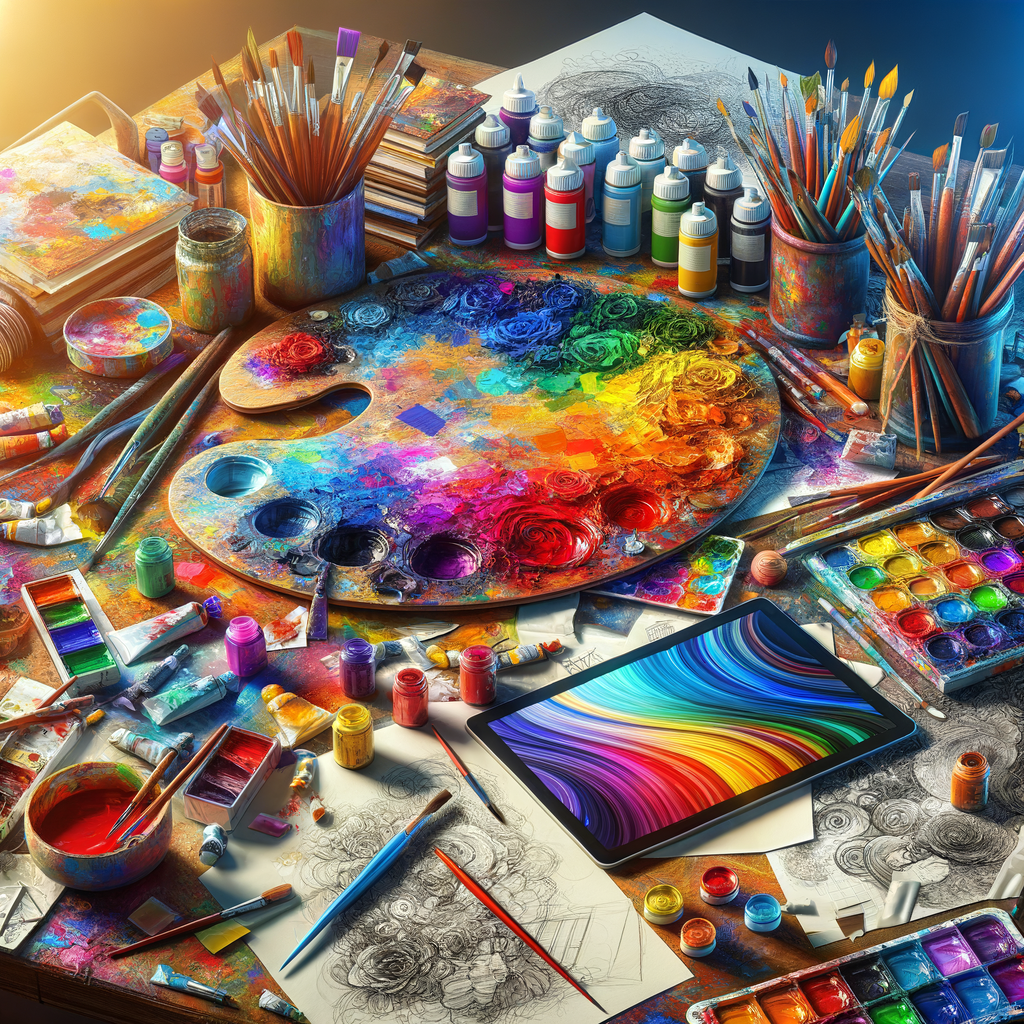
Color is one of the most powerful elements in art, influencing the mood and perception of the artwork. Understanding color theory is essential for artists looking to elevate their digital paintings. This article serves as an in-depth guide for both beginners and seasoned artists, focusing on creating effective and harmonious color palettes that enhance your work.
As we delve into the world of color, it's essential to grasp the fundamentals of color theory. This includes understanding the color wheel, which consists of primary, secondary, and tertiary colors. These colors are the building blocks of any vibrant palette.
Colors can be classified into warm and cool tones. Warm colors such as reds, oranges, and yellows evoke feelings of warmth and energy, making them ideal for creating lively and stimulating compositions. On the other hand, cool colors like blues, greens, and purples provide a calming effect, perfect for serene and tranquil artwork.
To create a harmonious color palette, artists often utilize color schemes such as monochromatic, analogous, complementary, triadic, and tetradic. Each scheme serves a different purpose and can produce various effects in the artwork.
Monochromatic Color Scheme
A monochromatic scheme involves different shades and tints of a single color. This approach can create a serene and cohesive look, ideal for conveying a specific mood or theme. For example, a palette consisting of various blues can evoke feelings of calmness and introspection.
Analogous Color Scheme
Analogous colors are groups of three colors that are next to each other on the color wheel. This scheme produces a rich and harmonious look, as the colors blend seamlessly. For instance, using colors like yellow, yellow-orange, and orange can create a warm, inviting atmosphere in your artwork.
Complementary Color Scheme
Complementary colors are located opposite each other on the color wheel. When placed together, they create contrast and vibrancy, making elements pop. An example of this would be pairing blue and orange or red and green. This color scheme is excellent for drawing attention to a particular area of the artwork.
Triadic Color Scheme
A triadic scheme uses three colors that are evenly spaced around the color wheel. This creates a vibrant yet balanced composition. An example would be red, yellow, and blue. This type of color scheme is often used to create playful and dynamic artwork.
Tetradic Color Scheme
A tetradic color scheme involves two complementary color pairs. This approach offers a wide range of color combinations, providing depth and complexity to your artwork. However, it requires careful handling to maintain balance and harmony within the piece.
Understanding how to mix and match these colors is crucial for any artist. Let's explore some practical tips on how to create effective color palettes for your digital artwork.
Creating Effective Color Palettes
1. **Start with a Base Color**: Choose a dominant color that reflects the mood you want to convey in your artwork. This will serve as the foundation of your palette.
2. **Utilize Color Tools**: Many digital art platforms, such as Adobe Photoshop and Procreate, offer color picker tools that allow you to experiment with different color schemes. Take advantage of these tools to find the perfect combinations.
3. **Analyze Nature and Art**: Look to nature for inspiration, as it provides a plethora of color combinations. Additionally, studying the works of renowned artists can offer insight into effective color usage.
4. **Test Your Palette**: Before committing to a color palette, try it out on a small section of your artwork to see how the colors interact. This quick test can save you time and effort in the long run.
Color and Emotion
Colors can evoke various emotions and atmospheres. For instance, warm colors often elicit feelings of happiness and excitement, while cool colors can evoke tranquility and sadness. Understanding this emotional connection can help artists choose the right colors for their intended message.
Practical Applications
Incorporating color theory into your digital artwork can drastically improve its impact. Here are some practical applications of color theory:
- **Creating a Focal Point**: Use contrasting colors to make specific elements stand out in your artwork. This technique draws the viewer's eye to the area of interest.
- **Establishing Depth**: Colors can create an illusion of depth. Warmer colors appear closer while cooler colors seem to recede. Utilize this knowledge to create stunning landscapes or dynamic character portraits.
- **Setting the Mood**: Choose colors that align with the emotions you wish to convey. For instance, dark and muted colors can create a sense of mystery, while bright and vibrant colors can evoke joy and energy.
Throughout your artistic journey, never hesitate to experiment with different colors and palettes. The beauty of digital art lies in its flexibility, allowing artists to try various techniques until they find their unique voice.
Conclusion
Mastering color theory is an ongoing journey for every artist. With practice and experimentation, you will develop an intuitive understanding of colors and how to use them effectively in your digital artwork. Embrace the vibrant world of color, and let it transform your artistic creations!

